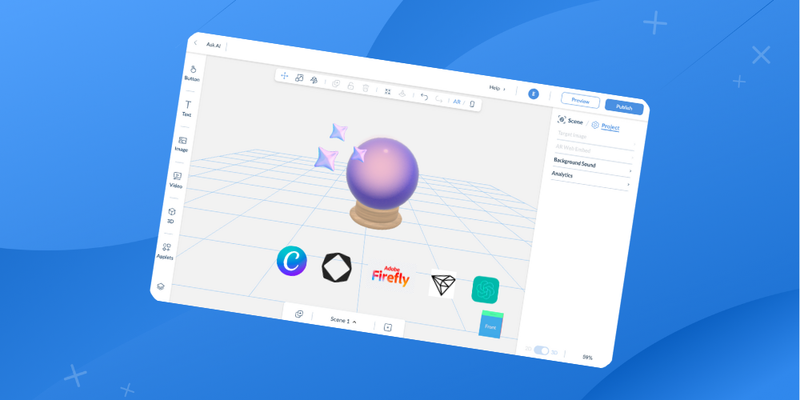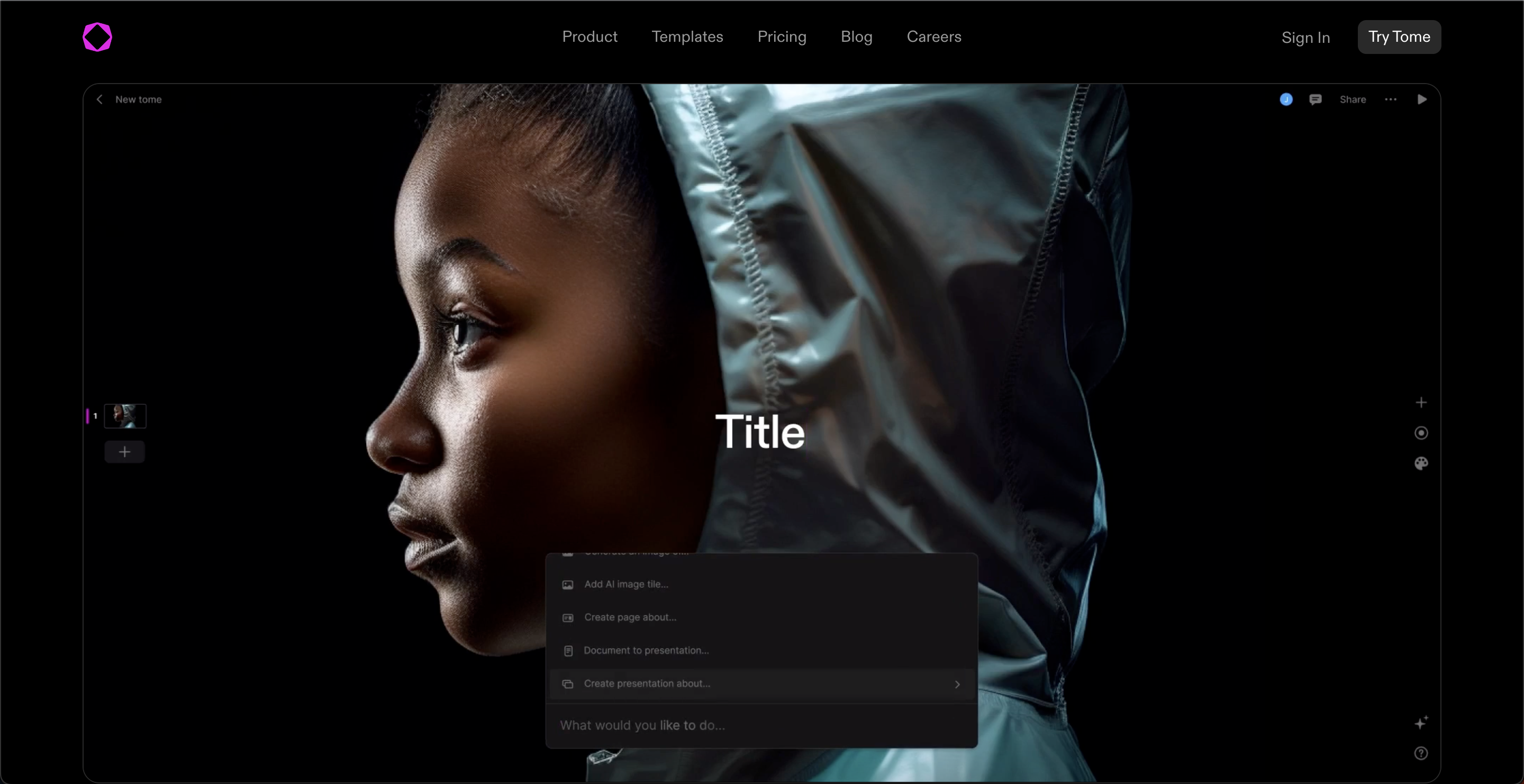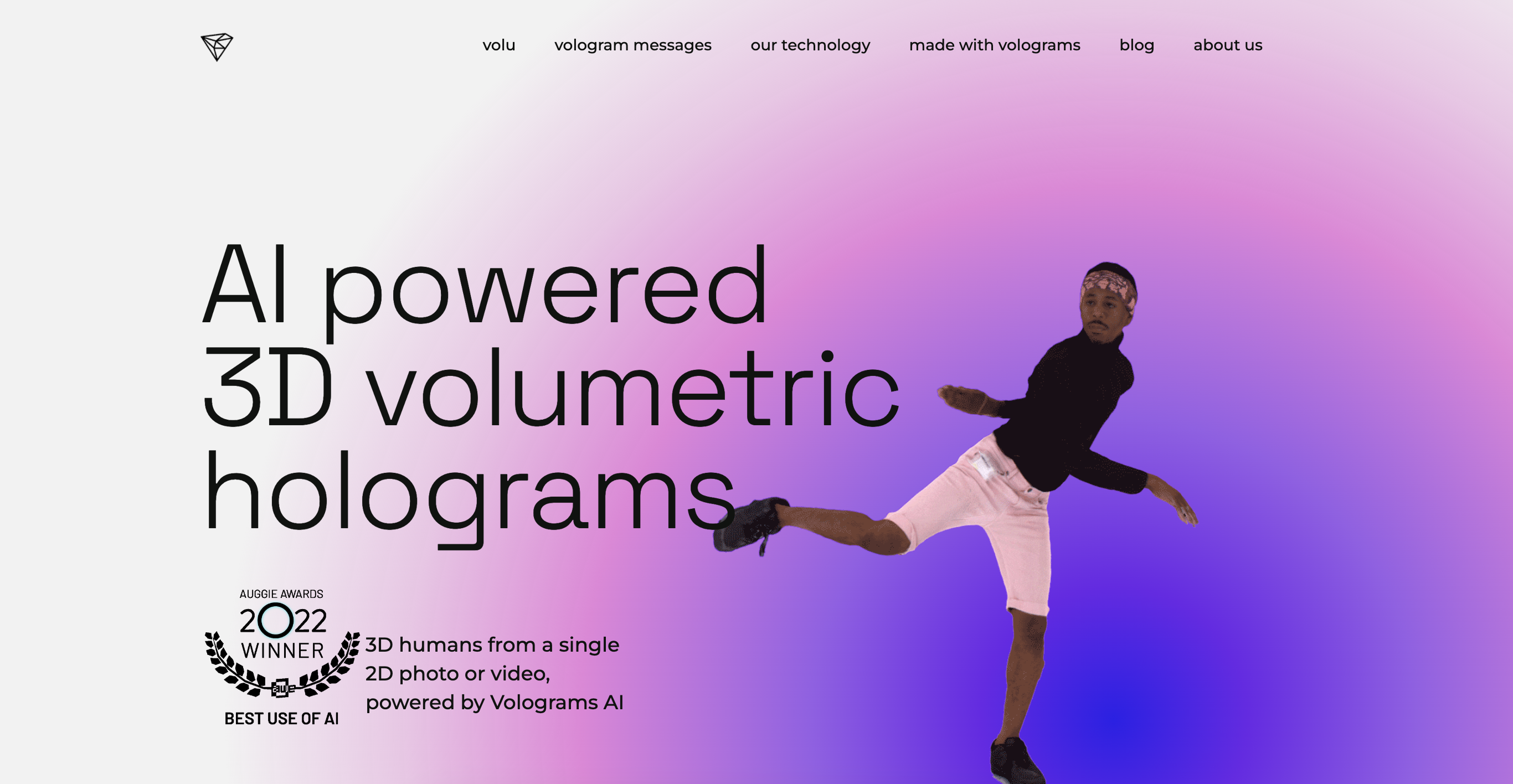Looking to understand how Al can speed up your workflows, expand your creative output, or simply plan a better AR campaign? In this blog, we break down 5 of the best Al tools that you can use in your next AR project.
To help you understand where you can use each tool, we've broken them down into four easy-to-understand categories;
Strategy - Improve the how, what, why and where of your AR campaigns
Ideation – Develop better ideas, faster that are aligned with your objectives
Creation – Improving the design and development of your AR experience
Evaluation – Better understand the performance and ROI from our AR campaigns
There are so many Al tools that we could have explored. so we have picked out the most useful five for supporting you in your creative process. Some tools can be used throughout the creation process, and others will only be useful for a small section.

1. Chat GPT
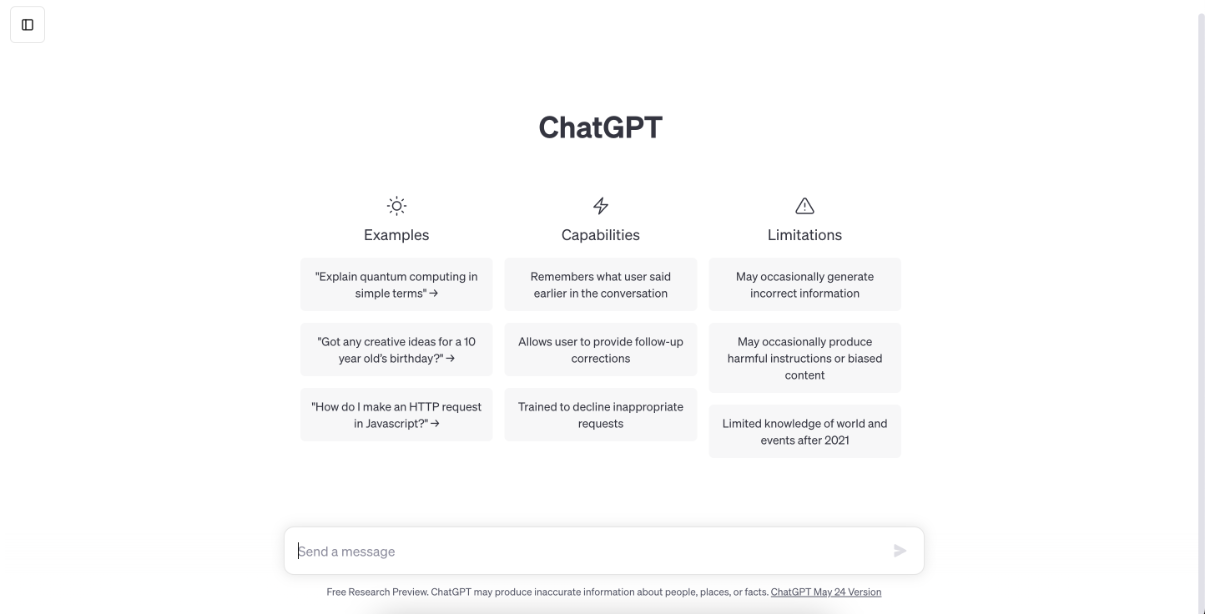
Price: Free
Pro Plan Available: $20 per month
Link: openai.com/blog/chatgpt
Now, we couldn't write an Al blog without mentioning the category leader, ChatGPT. Chat GPT serves as a versatile tool throughout the creation of Al experiences. It can support various processes:
Ideation: During the ideation process, Chat GPT can prompt brainstorming sessions or apply
expert knowledge to help contextualize your AR experience, fostering creative thinking and
exploration.
Strategy: Can be used as a sounding board to generate and develop ideas, providing valuable
insights and perspectives during the strategic planning phase.
Creative phase: Aids in idea refinement, content generation, and design feedback, assisting in
shaping and polishing your creative decisions in alignment with project goals.
Evaluation: Establish clear goals and outcomes for your project and later assess its success,
ensuring it meets the desired objectives. Throughout these stages, Chat GPT acts as a valuable resource, contributing to idea generation, knowledge expansion, creative refinement, and evaluation, enhancing the overall development process of AR experiences.
Example prompts
Here are some example prompts we’ve used in ChatGPT that you can try:
Strategy Prompt
“Brainstorm ideas for an augmented reality experience launched from a cereal box using the 5C's below:
Context - The who, what, where and why.
Control - It's all about the scanning environment.
Call to Action - How users access the content, and why they should.
Content - Think inspiration, information & incentivisation.
Comms - Your internal and external education.”
Ideation Prompt
“Generate 10 ideas for an augmented reality experience launched from a cereal box with the objective of increasing brand awareness and social shares.”
Creative Prompt
“Help me design a user experience flow for an augmented reality experience launched from a cereal box with the objective of increasing brand awareness and social shares.”
Evaluation Prompt
“Evaluate the user feedback from my AR experience below – which aspects should I focus on to improve the overall engagement of my project?”
2. Tome.App
Price: Free
Pro Plan: $8 per month per user
Link: tome.app
Tome is an Al presentation tool that assists in various phases of AR development. Its focus is on narrative-based presentations, helping users convey their message, and share their vision. The generative storytelling format uses Al to help craft and refine narratives throughout the storytelling process.
By typing in a query, Tome can generate an entire presentation based on a simple prompt. The tool incorporates appropriate copy and images from Dalle, another Al-powered tool, to quickly create a page. Users have the flexibility to retry the generation based on the same prompt, edit the prompt, or make manual adjustments. You can also embed an AR experience (with AR Web Embed from Zapworks Designer) on any slide to help bring the presentation to life.
Tome offers a wide range of components for presentations, including the ability to embed AR web content from Zapworks designer and is a useful tool throughout the AR creation process
including:
Strategy - Tome supports users at the beginning stages of strategy, assisting in generating robust narratives, creating visuals, and transforming documents into presentations.
Creation - As the creative process unfolds, Tome continues to be valuable by helping refine
ideas, fine-tune copy, address any gaps in slides, and automatically generate source citations for the work.
This presentation was created from the following prompt:
"Help me design a user experience flow for an augmented reality experience launch based on the ideation prompt of "AR Animated Storytelling: Turn the cereal box into a storytelling platform with augmented reality. Users can scan the box and watch as a captivating animated story unfolds in their surroundings. The story could revolve around the brand's values, characters, or themes, encouraging viewers to share the enchanting experience with their social networks." The experience would launch from a cereal box with the objective of increasing brand awareness and social shares.”
The results were impressive, covering in detail the ideation, storyline, user experience, and strategies for increasing brand awareness. The report provided detailed information that would be useful in creating a presentation to map out the user journey and overall experience.
Take a look at the full presentation here.
3. Adobe Firefly
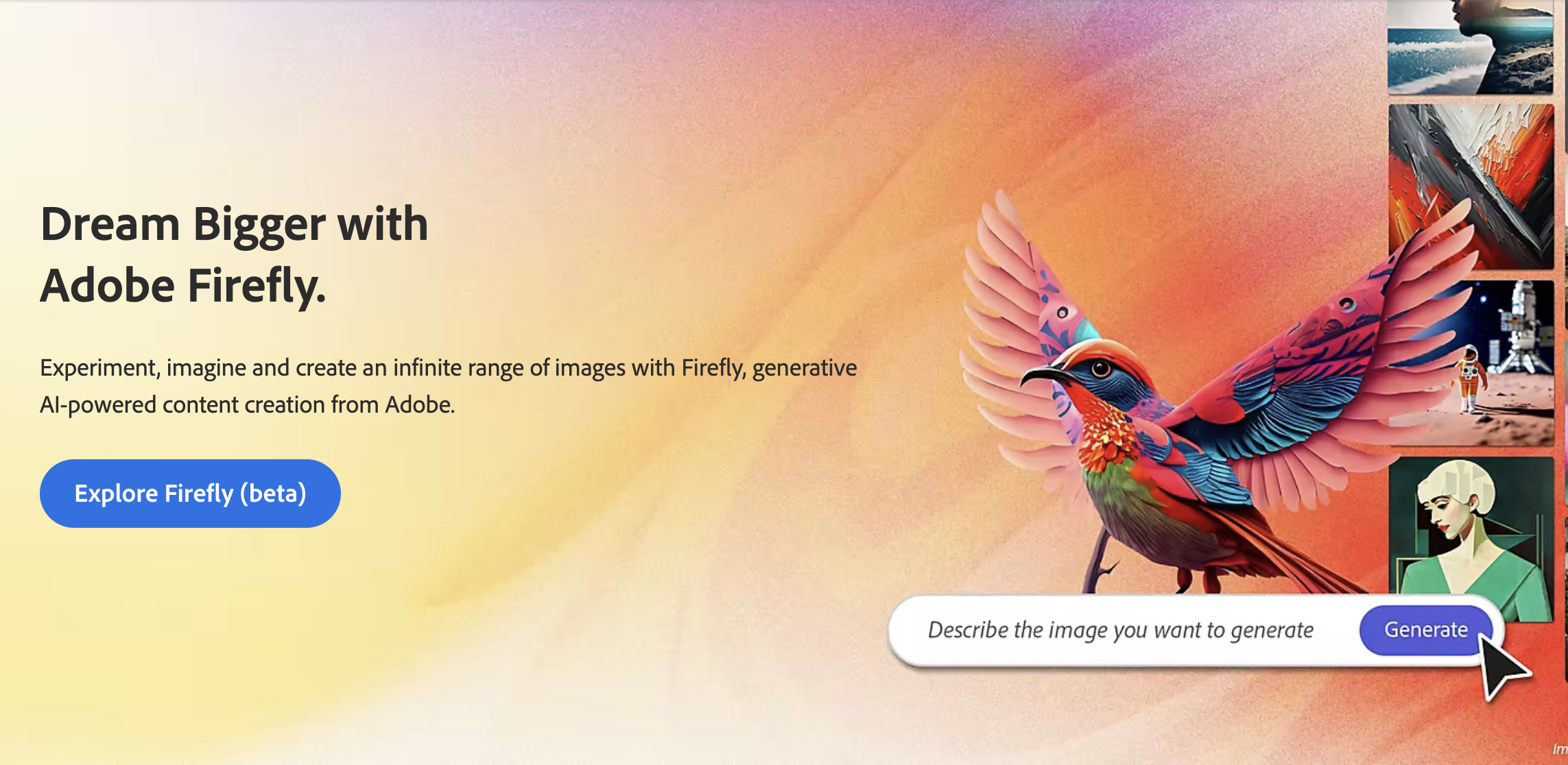
Price: Part of Creative Cloud licence
Link: adobe.com/sensei/generative-ai/firefly.html
Adobe Firefly is a family of generative Al models created by Adobe for its creative cloud suite. There are several Al models, mostly focusing on image and text effect generation with the aim being to improve creative workflows across Adobe's apps. Many uses of Adobe Firefly have been improved or updated with Al.
Ideation - Adobe Firefly offers an easy prompt system for generating images based on user input. Provides numerous plausible options for characters, worlds, and other design elements. By entering a detailed and descriptive prompt, users receive a selection of options to choose from.
Developed Ideation - The tool enhances idea generation by creating user-friendly images and ideas that can be easily shared and understood. This simplifies collaboration with teams and clients. If the design resonates with the stakeholders, it serves as a starting point to bring the idea to life and continue its development.
Creation - Adobe Firefly is designed to automate repetitive tasks and streamline workflows. It saves time and effort by quickly creating multiple ideas, images, text pieces, and exploring different styles and effects. The tool maintains high-quality outputs while reducing the time required for creation. Users can build upon the outputs generated during the prototyping stage, creating a solid foundation for development.
Adobe Firefly leverages an easy prompt system to generate images and ideas for designs. It accelerates the design process, enhances collaboration, and automates repetitive tasks, allowing for efficient exploration and experimentation. The tool enables users to create high quality prototypes and storyboards, serving as a springboard for further development.
4. Volograms
Price: $2.99 for one message
Pro Plan: $4999 for unlimited messages
Link: volograms.com
Volograms is a tool that captures volumetric video using a single camera. It creates dynamic 3D models of objects or people, giving a sense of depth and immersion. With Volograms, you only need to record a video following setup instructions, and the Al algorithms process it to create a 3D reconstruction with human segmentation, texture synthesis, motion capture, and more. No complex setup or additional equipment is required.
Creation - Volograms simplifies the creation of AR experiences by easily adding 3D versions of yourself. It accelerates avatar creation and eliminates the challenges of finding or making 3D avatars, enabling seamless remote communication and connection with your audience.
Strategy - When creating an AR experience, consider the narrative and navigation. An avatar or Vologram can serve as a guide, directing users and explaining how to interact with the AR
experience.
5. Canva + AI Integrations
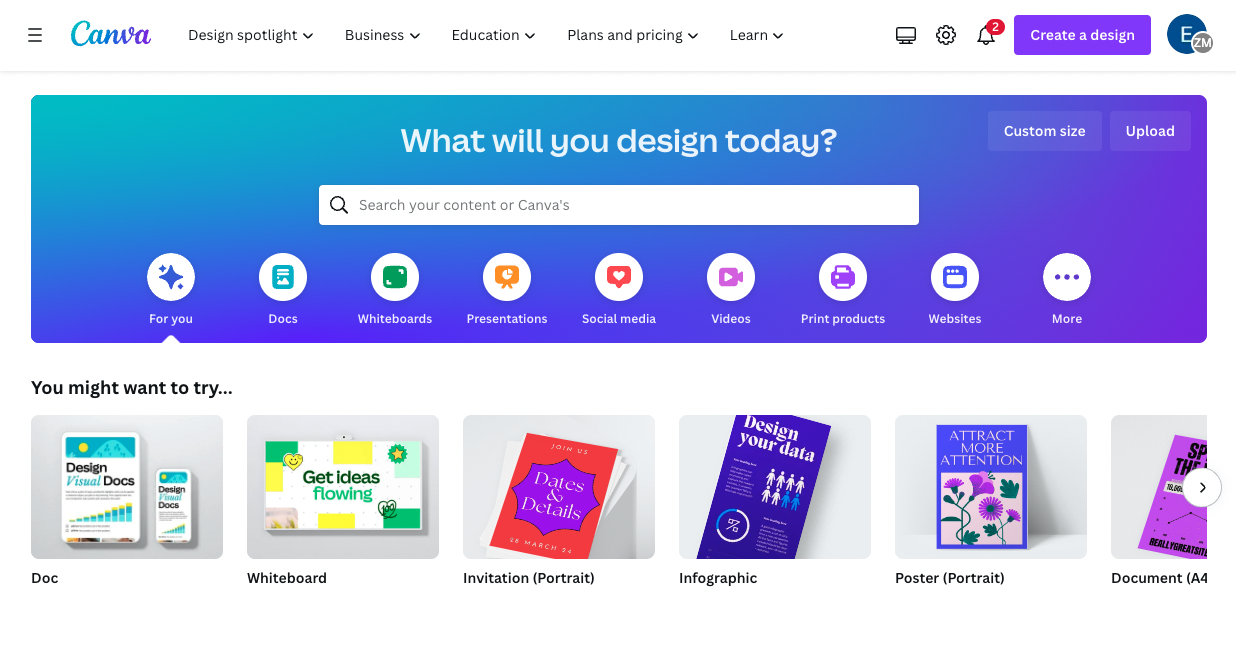
Price: Pro Plan Required $12.99 per month
Link: canva.com
Canva is a graphic design platform that makes it easy for anyone to create beautiful designs for anything from social media posts to infographics and presentations. They have been busy creating a series of Al-powered tools to help further their ease-of-use mission.
In 2019, Canva introduced an Al-powered background remover which allowed you to delete any background that you didn't want in just one click. This was just the start of integrating Al tools into their creative suite.
Recently Canva announced a flurry of Al tools and also added a series of integrations with Al apps. We are going to highlight some of the features you can use as part of creating your AR experiences
Ideation - Canva's Text to Image feature generates images based on prompts. It's perfect for
brainstorming, testing AR ideas, and conveying messages in meetings or presentations. It quickly allows you to brainstorm rather than relying on designers to mock up your ideas.
Strategy - Magic Design in Canva is a quick way to structure presentations. Just type a detailed prompt of more than 5 words to get a better output. The presentations have around 8 slides with titles, body text, and images. It provides a starting point for creating presentations and pitch decks with added style.
Creation - Magic Design in Canva lets you start designing various media types from a photo,
which is perfect for creating assets for your AR projects. For example, you can begin with an image to use in an image-tracked experience. It generates trackable images for you to choose from based on your prompt. You can also utilize it for designing event invites, business cards with QR codes, social media posts to promote your experiences and more!
Where to find more AI tools
These are just 5 Al tools we've found useful in our exploratory research. but there are literally 1,000s of others you can get to grips with in your own time. 'There's an Al for that' has done the hard work for you and aggregated all of the current Al tools on the market - at the time of writing this, there are 5,367 Al tools for 1,510 tasks ranging from personal use cases such as creating travel itineraries, meal plans and even writing chat up lines! There is also a wide selection to help you at work or find work from writing CV's to creating great subject lines.
Watch the full breakdown
We hosted a webinar on this very subject with members of the Zappar team – watch the recording back in full to get the full breakdown of AI tools we’ve been using at Zappar.
Final thoughts
To sum up, the use of Al tools in the creation of AR offers both pros and cons. On the positive side, Al tools can streamline and accelerate the development process, providing capabilities such as content generation, pattern recognition, and data analysis. They enable the automation of repetitive tasks, freeing up human resources for more creative and strategic aspects of AR development.
However, be warned, there are also challenges and considerations when integrating Al tools into AR development.
One concern is the potential over-reliance on Al, which may diminish the human touch and
creativity in the process. Al tools can produce results that lack the nuance, context, and artistic flair that human designers and developers bring. Privacy and ethical concerns also arise when using Al to collect and analyze user data for personalized AR experiences. Ensuring data security and maintaining user trust becomes crucial in these scenarios. Furthermore, Al tools are not infallible and may generate errors or biases that need to be carefully monitored and addressed.
To strike the right balance, it is important to view Al tools as complementary to human expertise rather than a complete replacement. Leveraging Al's strengths in efficiency, data analysis, and intelligent interactions can enhance the AR creation process. However, human creativity, intuition, and critical thinking remain invaluable in delivering immersive, meaningful, and impactful AR experiences.
A collaborative approach that combines Al tools with human ingenuity and user-centric design principles can lead to the most successful and engaging AR campaigns.
What do you think
Share your thoughts with us on the future of AI and how the technology can be used to improve the AR development process on our new Discord server - see you there!
 Emma Moore
Emma MooreCustomer Success Manager, Zappar
